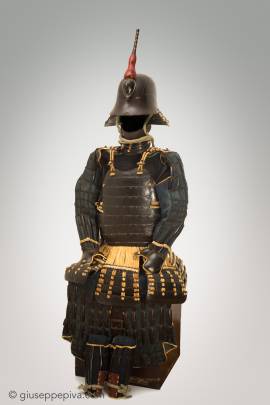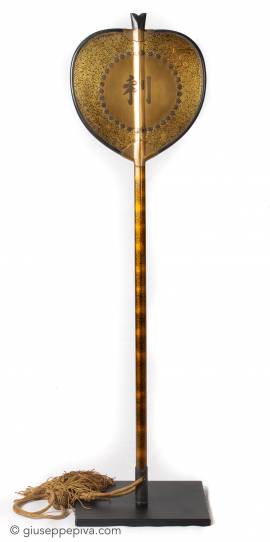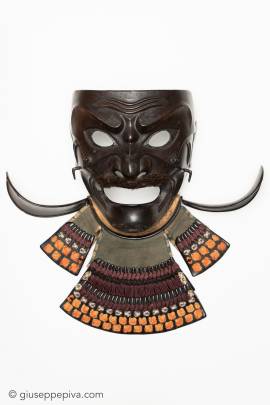Armor of Sansai typeEarly Edo period (1615 - 1867)17th centuryInscribed in various parts: Nishimura Kiyomune Hosokawa Sansai (or Tadakoi 1563 - 1646) was a successful general; he modified the traditional gusoku creating the model now know under his name. These are simple and very practical armors, that reflect the elegant artistic sensibility of Sansai, who was also a tea ceremony master.The kabuto is of Etchu (zunari) type; the cuirass in iyozane maru, often covered in lacquer. The mask is always an hanbo and sode are not...
WORKS FOR SALE
A rare long war fan DATELate Edo period, 18th - 19th century MEDIUMLacquered wood and metal fittingsLENGTH74.5 cmCERTIFICATENKBKHK Tokubetsu Kichou Shiryo The various implements used by samurai commanders to signal orders on the battered field or to direct troop movements were referred to as jineigu. Among them, the gunbai uchiwa, a fixed fan, was the equipment that was used by generals and daimyō and hence became a symbol of power.The flat part of this gunbai is decorated with a circle of thirty-four stars on a ōhirame ground (flat-hammered gold balls) with the character...
A full-face russet iron samurai amour’s mask with fierce expressionEarly Edo period, 17th -18th centuryProvenance:Kyoto, Arashiyama MuseumLiterature:Kyoto Arashiyama Bijutsukan, catalog, pag. 28Iida Kazuo, Katchû-men (Tokyo, 1991), cat. 123Rare lacquered iron sōmen lacquered in kuro-urushi. The mask, with an expression both strong and elegant, is constructed in two parts only, with the nose incorporated into the upper section. This type of fabrication is found in some sōmen signed by Wushu Masanobu, of which other features, such as the shape of the side wrinkles and the protuberance...
Copyright © 2016 - giuseppe piva - VAT: 05104180962










